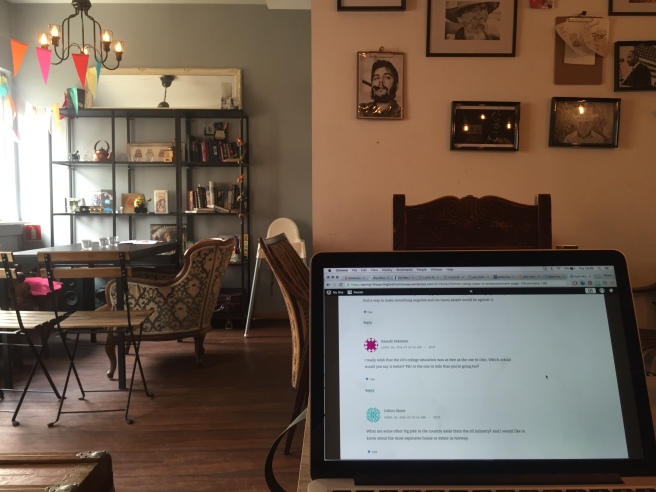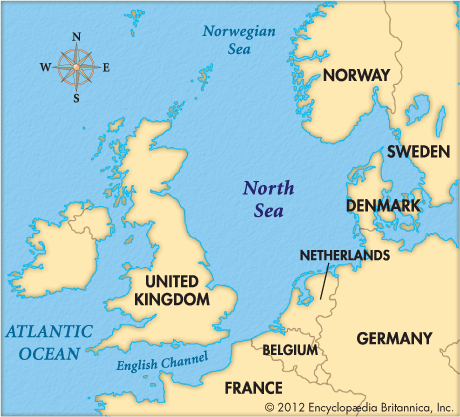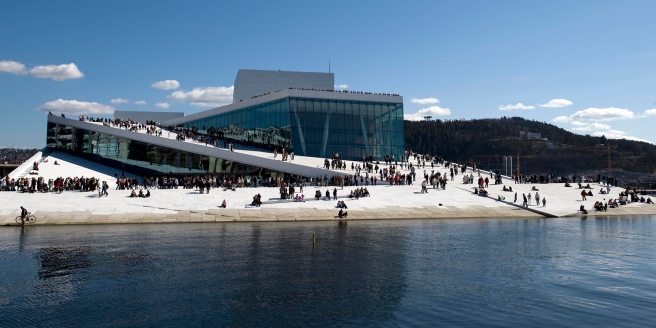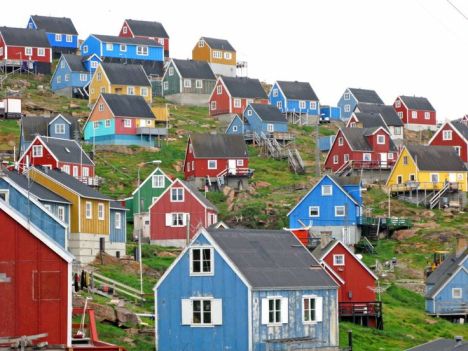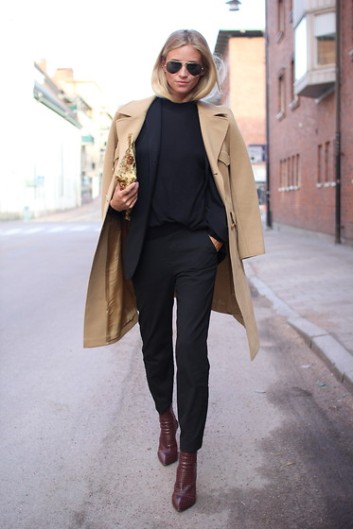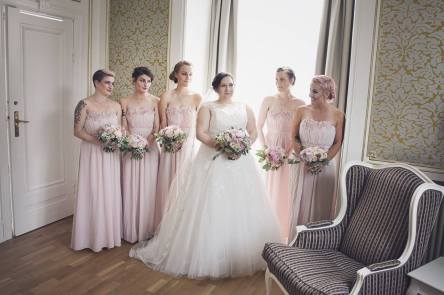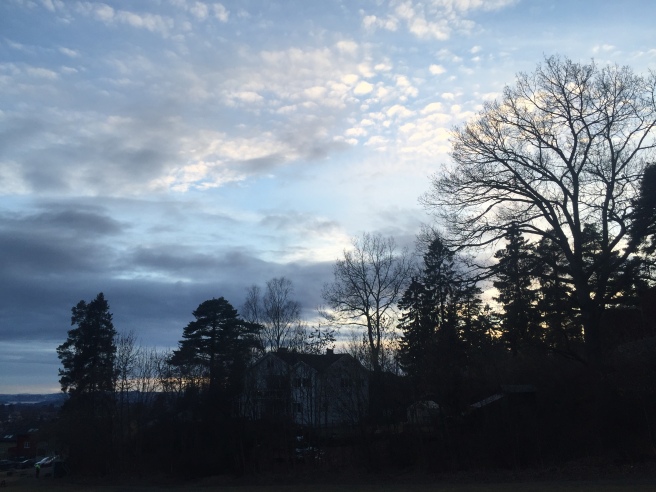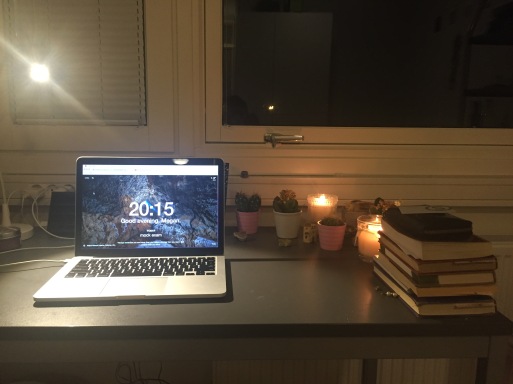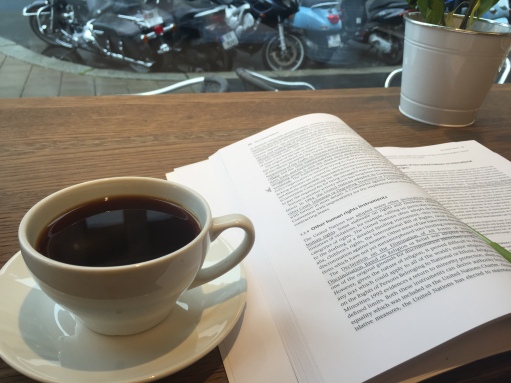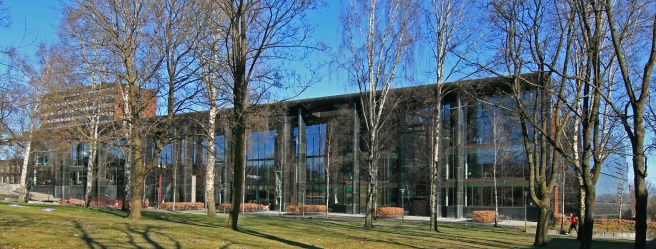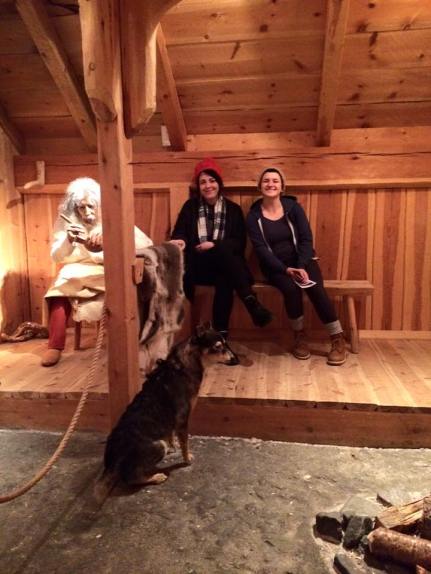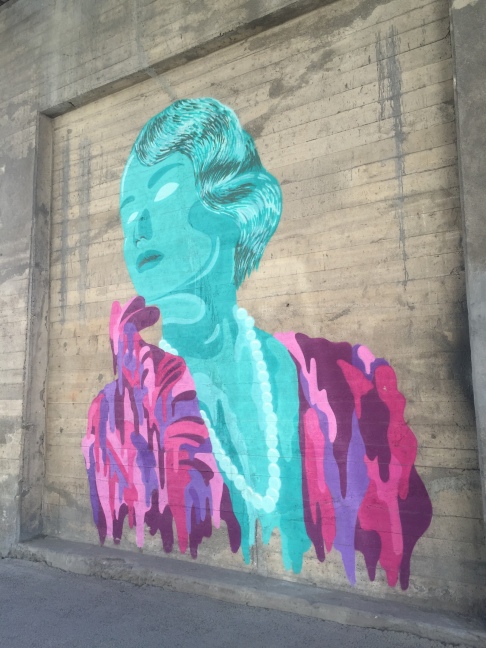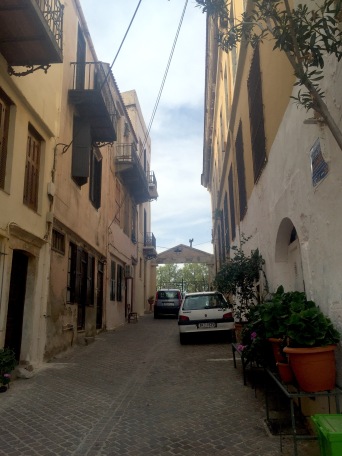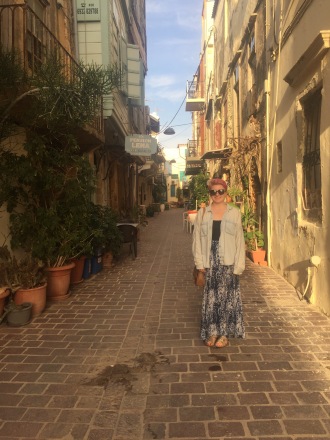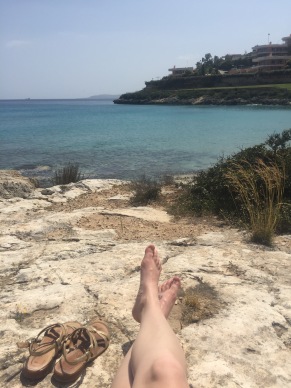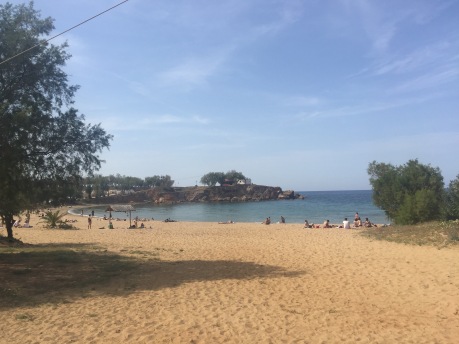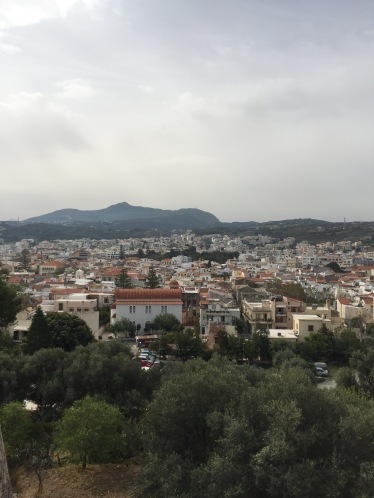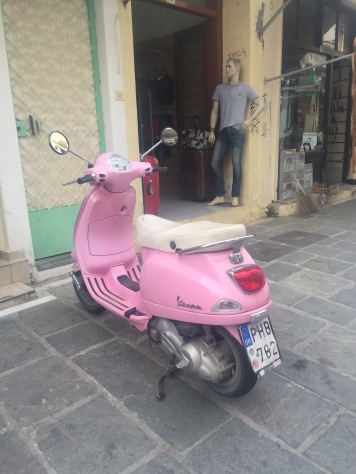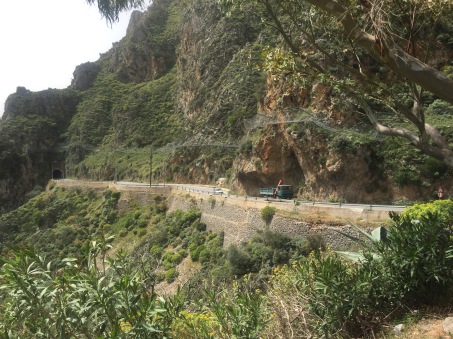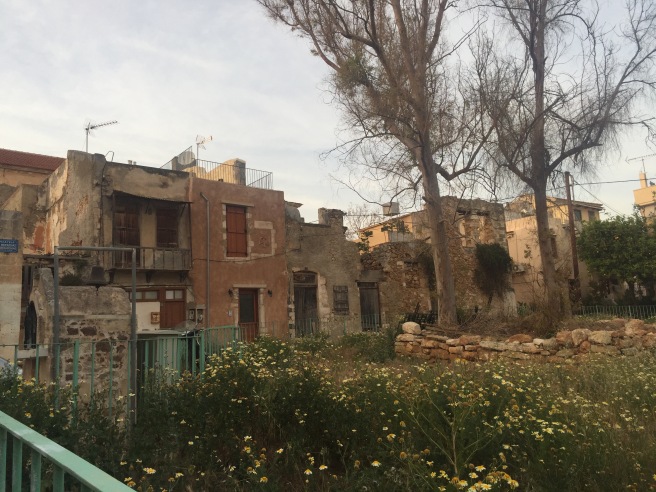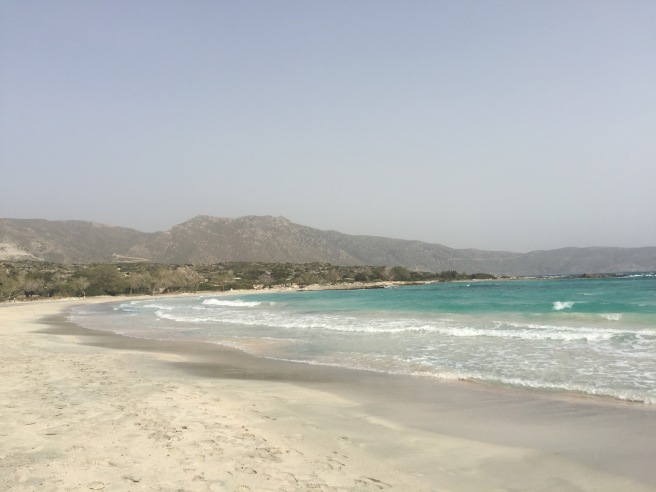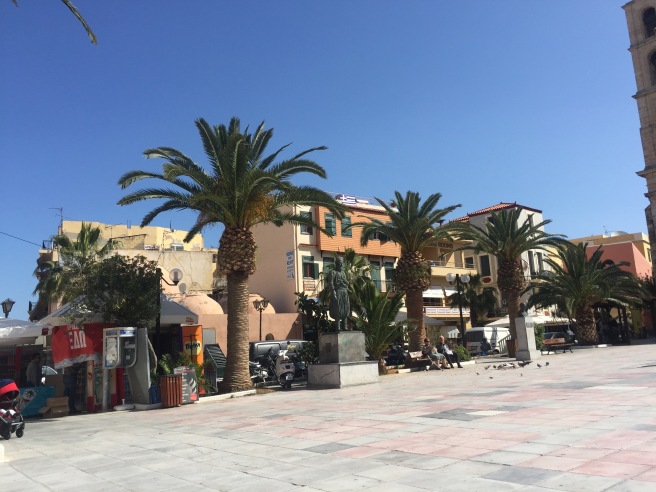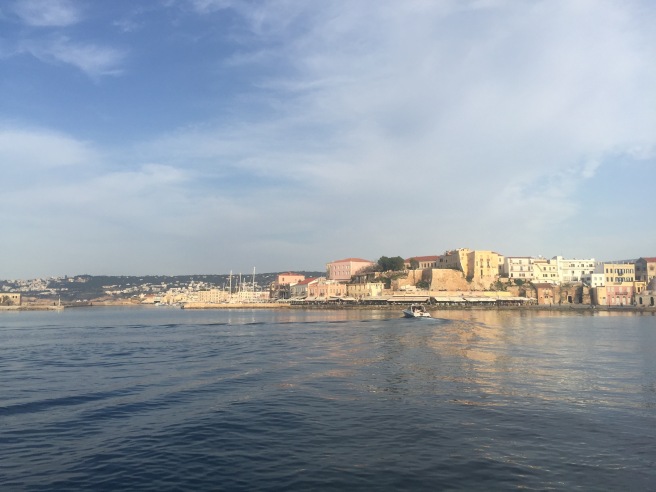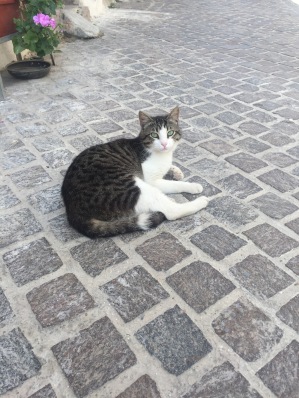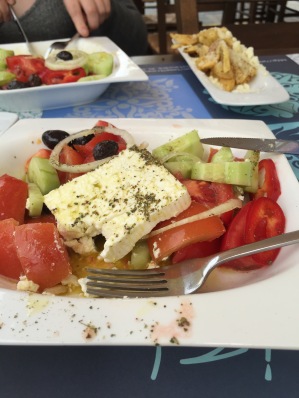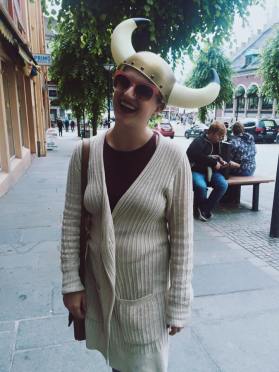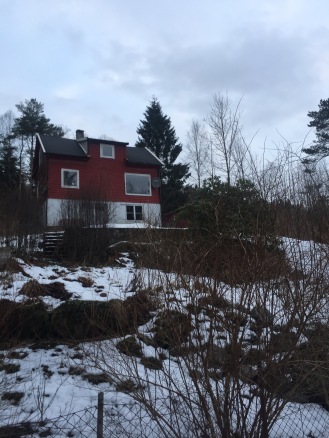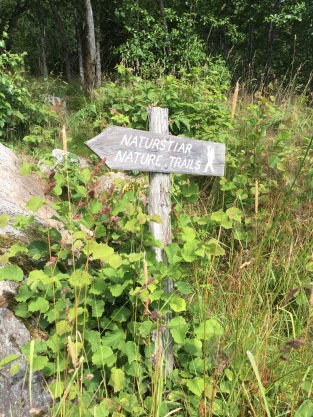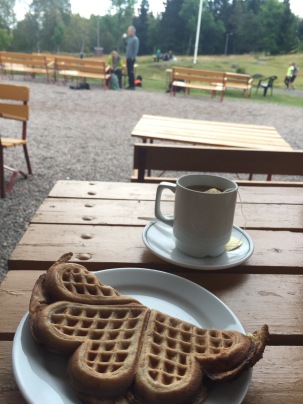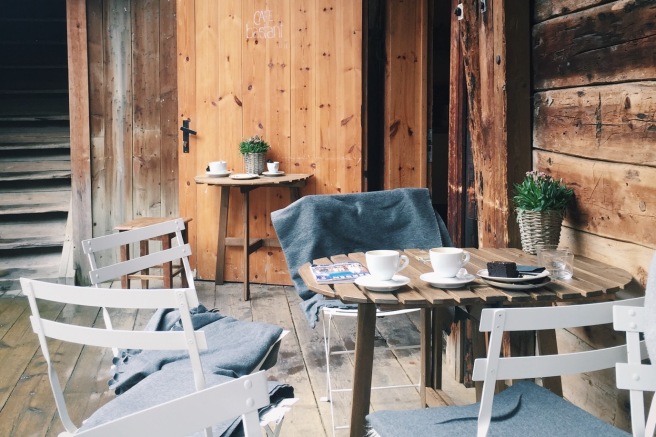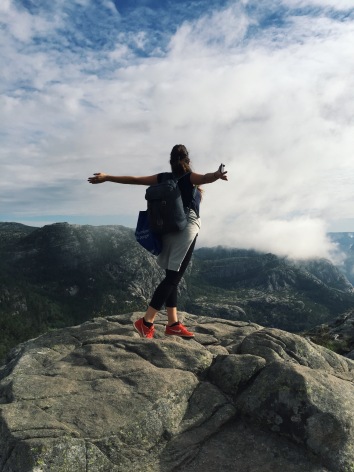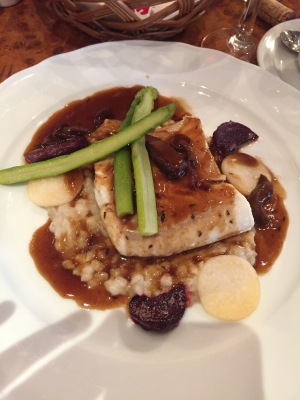Today we’re going to go on a virtual tour of the city! While Oslo isn’t necessarily known for its art and culture, it does have it’s fair share of interesting museums, parks, and buildings that showcase the history of the city. The nice thing about these places is that you can do most of them in a day if you plan your time wisely. This list is comprised of my own personal favorites but there’s many other things that could be added as well. We’ll set the scene at the Nationalteateret T-bane stop in the middle of downtown.
National Gallery
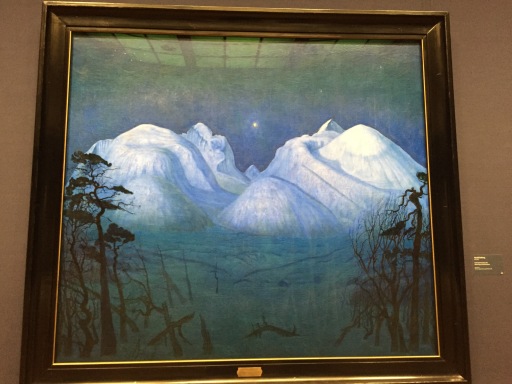
The National Gallery is just a short, five minute walk from the T-bane station. It holds a huge permanent collection of paintings, sculptures, and drawings; as well as temporary exhibits. Honestly, you could probably spend an entire day in here but I recommend finding the painting to the left and sticking to the rooms around it. These rooms have a ton of traditional Scandinavian art that I’ve never seen in other museums (I’ll go into any art museum in any city, so that’s saying a lot!) . A lot of the pieces are paintings of nature, which speaks to the fascination the Scandinavian people have always had with natural wonders.
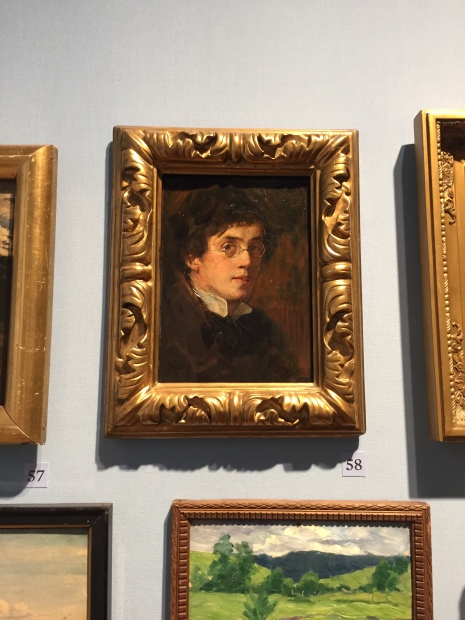
Also, you have to find this painting, which I personally believe was J.K. Rowling’s inspiration for the whole character.
Astrup Fearnley Museum
Once you’ve had your fill of traditional art, the Astrup Fearnley Museum of Modern is a ten-minute walk back past the National Theater and down to Aker Brygge (the harbor). From outside you can tell that it’s a modern art museum, with it’s weirdly shaped building and brightly colored sculptures waiting to greet you. Once inside, it’s a gamble to see if the exhibits on display are amazing or confusing (ex. one time I spent a considerable amount of time trying to figure out if the banana peel on the floor was a piece of art or not. It was!), but it’s always fun.
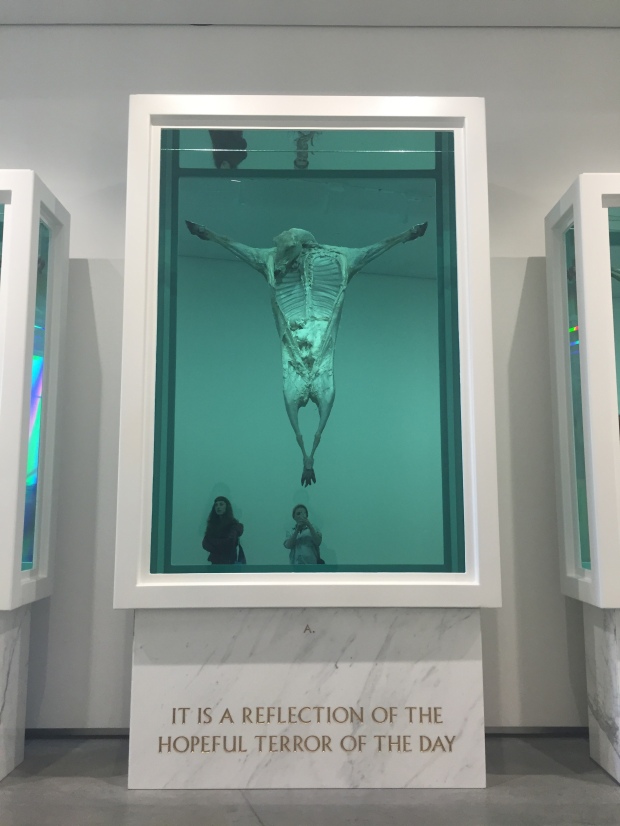
So far, my favorite exhibit I’ve seen has been a huge collection of works by Damien Hirst. He’s a British artist who specializes in pieces that are often created with the goal of making the audience uncomfortable, such as the preserved, crucified sheep above. Some of his stuff is hard to stomach, but it’s also hard to look away! The Astrup Fearnely Museum actually owns a number of his pieces, so they pop up in various exhibits from time to time.
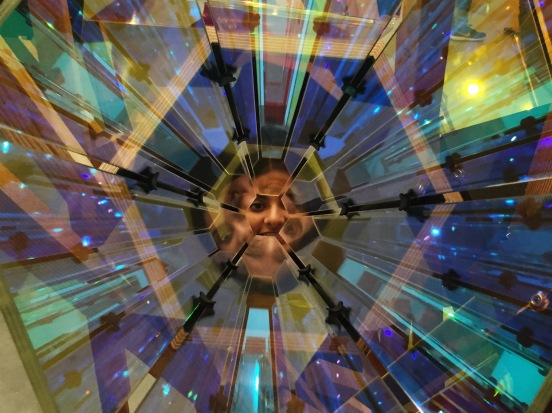
Munch Museum
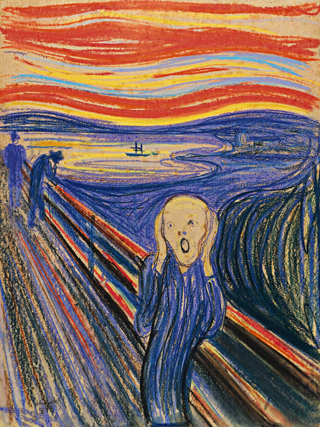
If the dead animals and banana peels aren’t your cup of tea, the Munch Museum might be more interesting. It’s located a few stops away on the T-bane from downtown right next to the botanical gardens.
(The botanical gardens are also beautiful, especially in the fall when all the leaves have littered the ground. One of my favorite things to do after going to the Munch Museum is grab a cup of coffee and go sit in the gardens next to the pond)
Edvard Munch is one of the two most famous artists from Norway (the other is Gustav Vigeland). His art is often eerie and deals with a lot of dark subject matter like death, which I believe is due to his battle of (speculated) mental illness throughout his life. His most well-known piece is ‘The Scream’, which you can see to the left. (Little known fact, there are actually four different versions of this painting). I absolutely love his work and the various styles and emotions he manages to convey. I’ve spent a number of days hanging out in this museum!
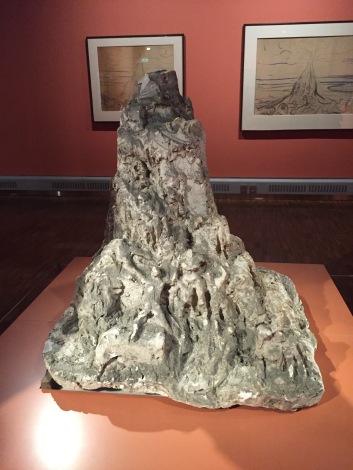
Gustav Vigeland is the second famous artist from Norway and he focused more on sculpture than painting. He had quite a rivalry with Munch and they did a lot of pieces with similar subject matter. In the picture to the left you can see a sculpture by Vigeland and in the background you can see a drawing by Munch of the same thing. (I’m sure they would both argue that they came up with it first!)
Vigeland Park
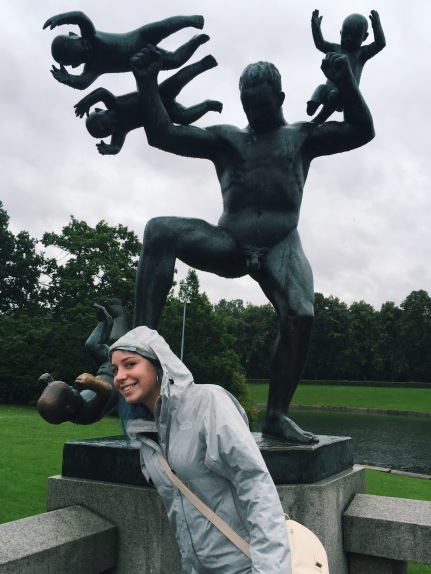
If there aren’t any pieces by Vigeland in the Munch Museum, don’t worry! He has an entire park full of his sculptures. It’s located across town in a neighborhood called Majorstuen (which is also full of fabulous shopping and food if statues of men flinging babies aren’t doing it for you).
This has to be one of the coolest, strangest displays of statues that I have ever seen. I’m not a huge fan of sculptures (sorry David), but these ones are all of people doing various things. There’s a lot of babies being thrown around and a huge tower made of people. Every single statue is different and it’s another one of those places you could spend all day in.
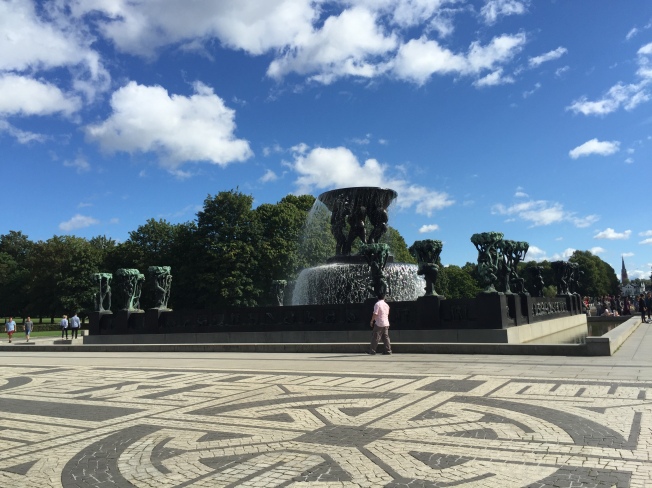
Holmenkollen
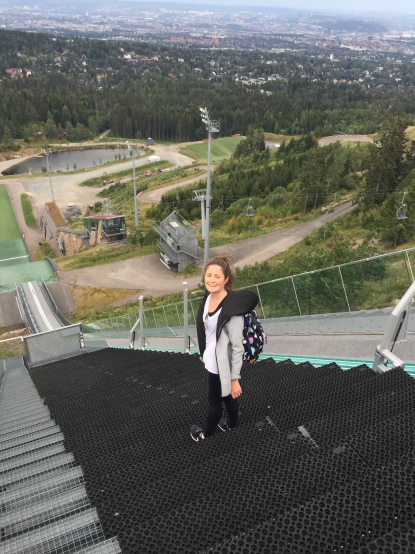
Sometimes, art can get exhausting and you just need to escape to the top of a mountain. When this happens, I head to Holmenkollen which is a stop on the T-Bane near the Winter Park (the downhill ski slopes). Here you’ll find a huge ski jump that’s been used for ski competitions in Oslo since 1892. It was also where the 1952 winter Olympics took place and you can still see people training for the Olympics here year round.
There’s also a smaller jump nearby which you can just walk right onto, as my friend is demonstrating. The first time we went, we thought the small jump was the one used for the Olympics because it seemed so big!
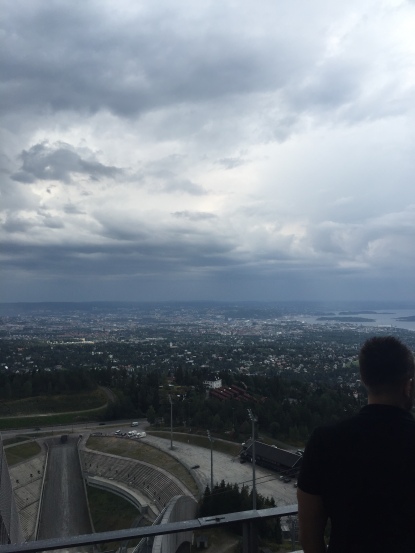
There’s a ski museum underneath the jump where you can learn all about the Royal Family and their ski habits. It’s also a good place if you need a cozy Norwegian sweater for the winter. Then you take an elevator up to the top of the jump where there’s an amazing view of the whole city. (The elevator is not very fun if you’re afraid of heights though, as it’s made of glass and you can see everything below.)
Night at the Opera
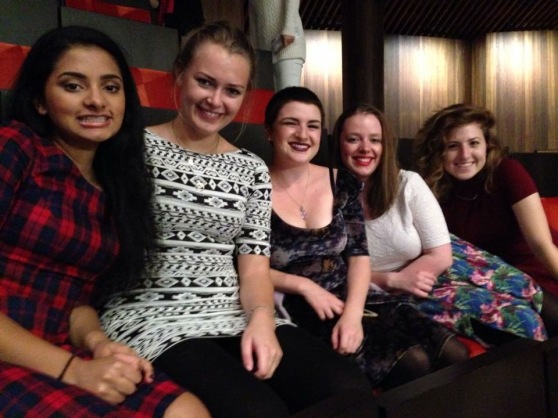
The last stop for the day is at the famous opera house (the outside was pictured in the last blog post), where you can go see an opera (obviously) or a ballet if opera is too much culture for you. I have only seen a ballet before, and I’m trying to build myself up to go to an opera before I leave. The architecture of the building is beautiful and they offer free tours of it during the day.
Norwegian students definitely do not frequently go to the opera (if at all). In fact, my friend Vanessa pictured about (second to the left) had to be convinced with lots of food to come with us and she’s lived in Oslo all her life. Once inside, it’s obvious that the audience demographic is mainly older Norwegians who will give you the stink-eye for not being dressed up enough but it’s fun anyways. The shows are often done by famous ballet companies from around the world and it’s very beautiful to watch. Also, if you don’t understand what’s going on, the seats are very comfy and it is very dark so no one will notice if you just happen to doze off.
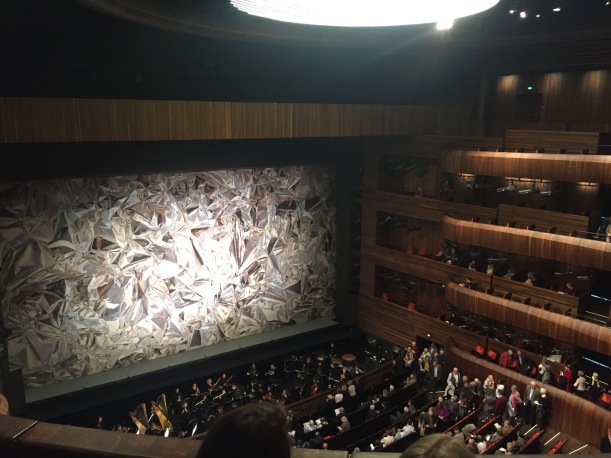
And thats it! You can now go out into the world and say that today you learned that Oslo is a fan of strange, wonderful art in all forms.
Do any of you have favorite types of art or make art yourself? Or seen any cool art in Portland recently? Let me know!
Bye,
Megan

